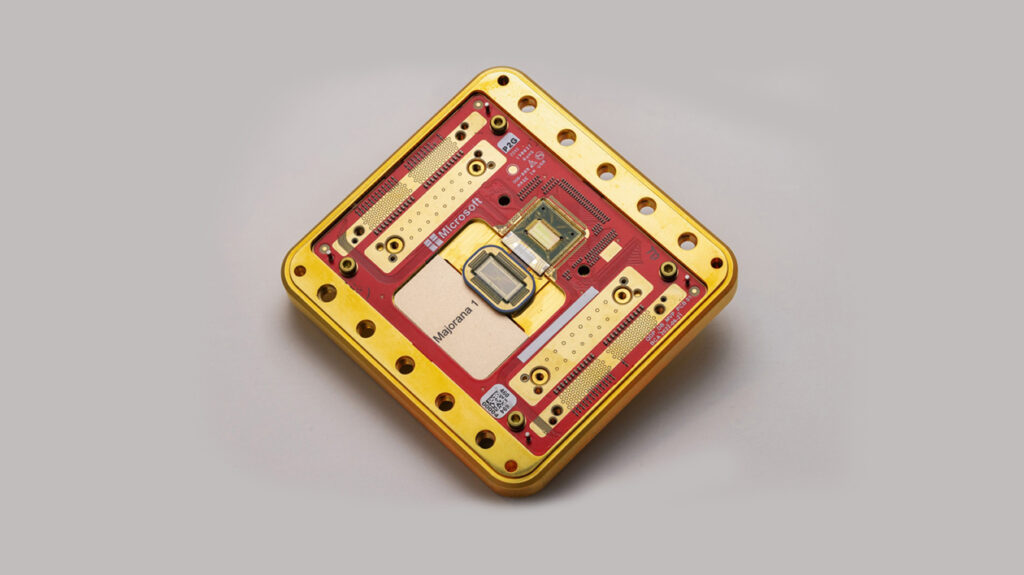Microsoft’s Majorana-1 Reimagines Quantum Computing

For most of us, the three basic states of matter—solid, liquid, and gas—were a fundamental part of science education growing up. But now, that understanding has expanded. After nearly two decades of research, Microsoft has helped unlock a new state of matter through a new class of materials called topoconductors, paving the way for a major leap in computing. This breakthrough, centered on the Majorana 1 chip, could bring practical quantum computing much sooner than expected—not in decades, but in just a few years. Microsoft’s goal is clear: driving productivity that accelerates economic growth worldwide. However, it is not only about the hype but also about building technology that truly serves humanity, as CEO Satya Nadella explained.
For many, quantum computing sounds intimidating—something abstract and overly complex. However, throughout history, computing has always evolved in waves of breakthroughs, often wrapped in technical jargon. What’s happening now, however, is worth unpacking. Microsoft is reimagining quantum computing using topological qubits, which promise more reliability and fewer errors than conventional qubits.
Chetan Nayak, a technical fellow at Microsoft, describes the thought process behind this innovation: “We took a step back and asked ourselves, ‘What would a transistor for the quantum era need to look like?’ That led us here. The quality and unique combination of materials in our new stack have enabled a new kind of qubit and, ultimately, an entirely new computing architecture.”
Microsoft sees this as a defining moment in quantum computing. Majorana 1 is the world’s first Quantum Processing Unit (QPU), designed to scale up to a million qubits on a single chip. It utilizes hardware-protected topological qubits, which leverage unique materials to create a qubit that is smaller, faster, and digitally controlled. Microsoft has also laid out a clear path for advancing from single-qubit systems to scalable arrays with built-in quantum error correction. Additionally, under DARPA’s US2QC program, the company is on track to build the first Fault-Tolerant Quantum Prototype (FTP) using these topological qubits. These achievements mark a transition from theoretical breakthroughs to practical, real-world applications.
One of the biggest challenges in quantum computing has always been the instability of qubits. Unlike classical bits, qubits are highly sensitive to external interference, which causes computational errors. Majorana 1 aims to overcome this by using topological superconductors, which significantly reduce errors and improve stability.
Nayak explains that this new class of materials allows Microsoft to create topological superconductivity, which was previously considered a theoretical state of matter. This breakthrough stems from Microsoft’s innovations in gate-defined devices that combine indium arsenide (a semiconductor) and aluminum (a superconductor). When cooled to near absolute zero and exposed to magnetic fields, these devices form topological superconducting nanowires with Majorana Zero Modes (MZMs) at their ends.
While other tech giants like IBM and Google have focused on superconducting qubits, trapped ions, and photonic systems, Microsoft has chosen a different path with topological qubits. These qubits, based on exotic physics, are expected to be more resilient against the errors that plague today’s quantum computers. If Microsoft successfully moves beyond lab-based experiments into real-world applications, this could be a game changer. Currently, a significant portion of a quantum computer’s processing power is dedicated to error correction, acting as a crutch that slows down progress. Microsoft’s approach could dramatically reduce this burden, clearing a path to large-scale, practical quantum machines.
The big question is whether this signals a true shift toward scalable, error-free quantum computing or not. Microsoft believes that Majorana 1 marks a major milestone in the race to build a fault-tolerant quantum computer capable of solving real-world problems. If successful, industries such as cryptography, materials science, and complex system optimization could see significant benefits.
However, skepticism remains. While Microsoft has introduced a bold new approach, the real challenge is integrating this innovation into commercial products. Quantum computing is still an evolving field, with multiple players competing for dominance. To illustrate, in 2019, Google claimed quantum supremacy with its Sycamore processor, which outperformed classical supercomputers in specific calculations. Meanwhile, IBM continues to scale up its superconducting quantum processors with a structured roadmap.
Despite the competition, Microsoft is confident that its unique strategy will pay off. “With Majorana 1, we’ve entered a new era of quantum computing, where stability and scalability are no longer distant goals but achievable realities,” said Krysta Svore, a leader in Microsoft’s quantum division.
At this point, what Microsoft has achieved is a glimpse into the future of computing. But whether this innovation leads to widespread adoption will depend on further research, refinement, and its ability to solve real-world challenges.
Similar Post You May Like
-

CFCs, HFCs and their long, troubled history
At its peak, the ozone hole covered an area 7 times larger than the size of Europe, around 29.9 million km2, and was rapidly expanding
-

The Origin of Universe: Deciding point where it all began!
Let us unravel and surf through the ideas throughout ages to understand what the universe and its origin itself was to its inhabitants across history.
-

The Artemis Program
Inspired by the Greek goddess of the Moon, twin sister to Apollo, the artimis program was named on 14 May 2019 by Jim Bridenstine.






